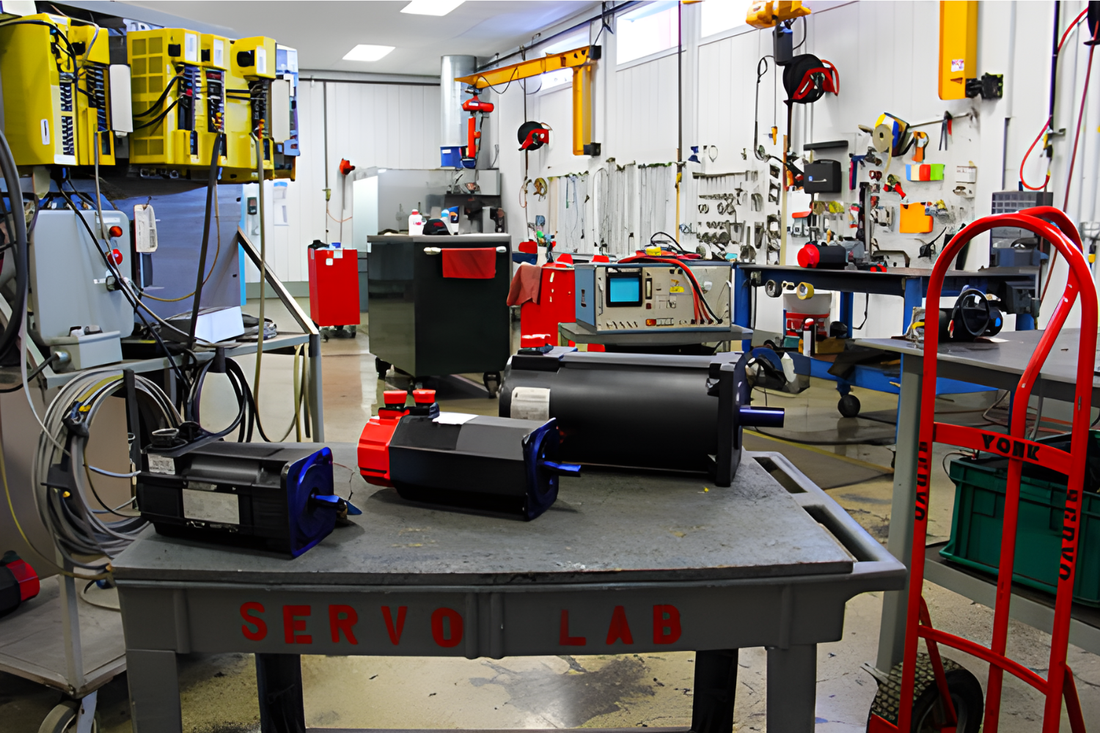
Why Winding Resistance Testing Matters in Industrial Servo Motor Repair
Jitendra PatiIn industrial automation, servo motors are the heart of precision control systems. Their performance, accuracy, and reliability directly affect how smoothly production lines run. When a servo motor starts acting up, whether it’s overheating, vibrating, or losing torque, one of the first diagnostic steps experts take is winding resistance testing. In the field of servo motor repair in Canada, winding resistance testing plays a crucial role in uncovering the health of the motor windings. This test helps determine if the motor’s copper coils are in good condition or suffering from damage caused by overheating, corrosion, or insulation breakdown. Identifying such issues early helps prevent costly downtime and protects equipment from catastrophic failure.
What Winding Resistance Testing Really Means
Winding resistance testing involves measuring the resistance of the copper windings inside a motor. The goal is to detect any imbalance between the motor’s phases. Even a small variation in resistance can signal a deeper problem - such as partial short circuits, loose connections, or deteriorating insulation.
Technicians use precision instruments to measure resistance values and compare them with manufacturer specifications. Consistency is key. If one winding shows a resistance significantly different from the others, it indicates a problem that demands further inspection. In many cases, this test becomes the first step toward pinpointing faults before they turn into expensive repairs.
Why It’s Essential for Industrial Motor Reliability
In large-scale operations, motors work for extended hours under high loads and challenging conditions. Over time, this can lead to uneven heating, coil degradation, and connection wear. Winding resistance testing helps maintenance teams catch these issues early.
For facilities relying on servo motor repair in Canada, this test ensures that only motors with healthy windings are put back into service. It also gives repair specialists valuable insight into the root cause of failures — whether it’s due to overcurrent, moisture exposure, or insulation aging. Regular testing reduces unexpected breakdowns and extends the lifespan of motors across production floors.
By verifying that each phase is balanced and free from internal faults, companies can maintain consistent machine performance and reduce costly production halts.
The Connection Between Winding Resistance and Motor Efficiency
When the winding resistance in a motor becomes unbalanced, the motor draws uneven currents across its phases. This imbalance leads to reduced efficiency, excessive heat generation, and potential bearing failures. In servo systems where precision is everything, even slight inefficiencies can lead to performance drift or inaccurate positioning.
That’s why expert technicians performing servo motor repair in Canada always include winding resistance testing as part of the inspection and repair process. It’s not just about finding faults; it’s about optimizing efficiency and ensuring the motor performs exactly as designed. A small resistance variation that seems insignificant can, over time, cause increased energy consumption and decreased productivity — two things no industrial setup can afford.
How Professionals Carry Out the Test
The testing process is precise yet straightforward when handled by skilled professionals. After disconnecting the motor from the drive, technicians use a digital low-resistance ohmmeter to measure each phase winding. They then record readings, ensuring they are within the acceptable tolerance range specified by the manufacturer.
If abnormal readings appear, further tests like insulation resistance or surge comparison may follow to verify the extent of internal damage. Proper temperature compensation is also considered, as resistance values can vary with changes in temperature. Accuracy at every step ensures reliable diagnostics and quality repair outcomes.
Some Final Thoughts
In the world of industrial automation, skipping winding resistance testing is like ignoring a warning light on your dashboard. It may seem fine for a while — until it’s not. By making this test a standard part of maintenance or repair routines, industries can safeguard against unexpected failures and extend equipment life.
For professionals handling servo motor repair in Canada, winding resistance testing isn’t just a technical procedure; it’s a smart, preventative practice that defines the difference between temporary fixes and lasting performance. It ensures every motor runs as efficiently, reliably, and safely as the day it was first installed — keeping production flowing and precision intact.
